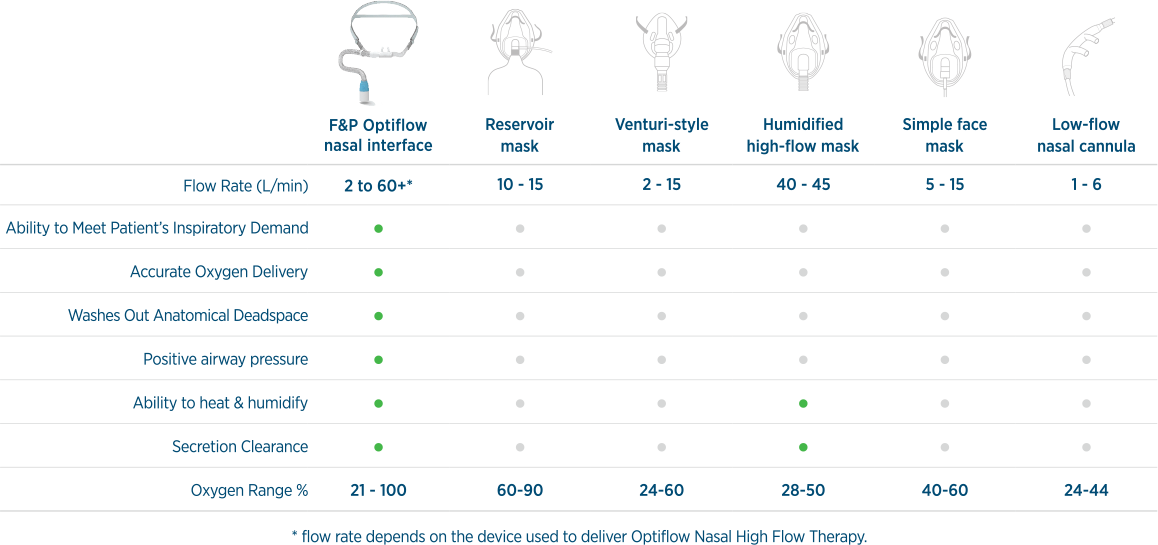Enter keyword
*Top search tip: Use an asterisk* (at the end of a word or part of a word) when using the search bar i.e. wildcard searching will give you the best result.
• e.g. searching humid* will bring up content that contains the words humid, humidity, humidification, humidifier
How does nasal high flow compare to conventional oxygen therapy - delivery of therapies and evidence.
Conventional oxygen therapy (COT) via a low-flow cannula and most styles of oxygen face mask are limited to lower flow rates (up to 10 L/min) in part because the gas is cold and dry making tolerability a significant issue.
These lower flow rates also limit FiO2 delivery and accuracy and aren’t high enough to offer the benefits of dead-space washout and positive airway pressure.
Although an NHF device can deliver high levels of oxygen (up to 100% FiO2) it’s not specifically an oxygen delivery device. In fact, NHF can be, and is, often used without supplemental oxygen, i.e., with room air – 0.21 FiO2.
Typically, “high flow” refers to flow rates above 15 L/min of a fully humidified air and oxygen mix. These higher flow rates enable mechanisms that cold, dry oxygen alone cannot provide.
See the table below for a comparison of standard COT devices and NHF.

- Clinical recommendations are now being published - several of these compare the efficacy of COT to NHF - see below.
Hundreds of randomized controlled trials have been consolidated into clinical practice guidelines.
These guidelines underscore the breadth of nasal high flow therapy application, and many of the recommendations include a comparison with COT.
We’ve created a table that will help you review the guidelines by patient population and application.
